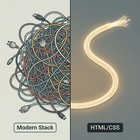Google has just dropped what might be the most significant advancement in AI image generation since GPT-4's multimodal capabilities. Gemini 2.5 Flash Image, playfully nicknamed "nano-banana" by the community, represents a quantum leap in both image quality and editing precision that's already shaking up the competitive landscape.
The Technical Breakthrough
What sets Gemini 2.5 Flash Image apart isn't just incremental improvement—it's a fundamental shift in how AI handles visual content. The model excels in three critical areas that have long plagued image generation:
Character Consistency Across Scenes
One of the most persistent challenges in AI image generation has been maintaining character appearance across multiple prompts. Gemini 2.5 Flash Image solves this elegantly, allowing creators to place the same character in different environments while preserving their distinct features. This capability opens doors for consistent brand assets, product showcases, and narrative storytelling.
Precision Editing with Natural Language
The model's ability to perform targeted transformations using simple prompts represents a paradigm shift. Users can now blur backgrounds, remove objects, alter poses, or colorize black-and-white photos with surgical precision—all through conversational commands rather than complex technical interfaces.
Multi-Image Processing
Perhaps most impressively, the model can simultaneously incorporate multiple images without the technical gymnastics required by competitors. This multimodal approach eliminates the need for pre-processing concatenation and enables more sophisticated creative workflows.
Market Positioning and Pricing Strategy
At $0.039 per image, Google has positioned itself competitively against established players while offering superior capabilities. Early benchmarks show the model achieving 8 out of 12 correct responses on strict text-to-image adherence tests, placing it within striking distance of industry leaders like GPT-4's image generation and Google's own Imagen.
The 171 ELO point jump in arena rankings signals not just incremental improvement but a categorical advancement that's already generating buzz across creative communities.
The Double-Edged Sword of Safety
Google's implementation includes mandatory SynthID watermarking for all generated content—a move that reflects the company's cautious approach to AI safety but also highlights growing tensions in the field. While watermarking addresses legitimate concerns about deepfakes and misinformation, it also represents a philosophical divide about user autonomy versus corporate responsibility.
Some practitioners report frustration with safety restrictions that reject prompts involving human subjects, limiting practical applications in photography and portrait work. This conservative stance may drive users toward more permissive alternatives, creating a competitive disadvantage despite technical superiority.
Real-World Applications and Limitations
Early adopters are already exploring diverse use cases: - Real estate listing generation - Product catalog creation - Photo restoration and enhancement - Brand asset development
However, the model still struggles with certain technical details—piano keyboards with incorrect black key arrangements serve as a reminder that even advanced AI can falter on domain-specific accuracy.
The Broader Implications
Gemini 2.5 Flash Image arrives at a inflection point for creative industries. The model's capabilities suggest we're approaching a threshold where AI-generated content becomes indistinguishable from human-created work, raising profound questions about artistic value, authenticity, and economic disruption.
The integration with Google AI Studio's "build mode" democratizes access to sophisticated image editing capabilities, potentially displacing traditional photo editing workflows and skill requirements. This accessibility could accelerate adoption while simultaneously commoditizing previously specialized expertise.
Looking Forward
Google's latest offering represents more than just another AI model—it's a statement about the future of visual content creation. The combination of technical excellence, competitive pricing, and integrated development tools positions Gemini 2.5 Flash Image as a serious challenger to established players.
As the AI image generation space continues to evolve at breakneck speed, the real test won't be technical capabilities alone, but how well companies balance innovation with responsibility, accessibility with safety, and user freedom with societal protection. Google's approach with Gemini 2.5 Flash Image suggests the industry is still grappling with these fundamental tensions—and the resolution of these debates will shape the future of AI-powered creativity.











